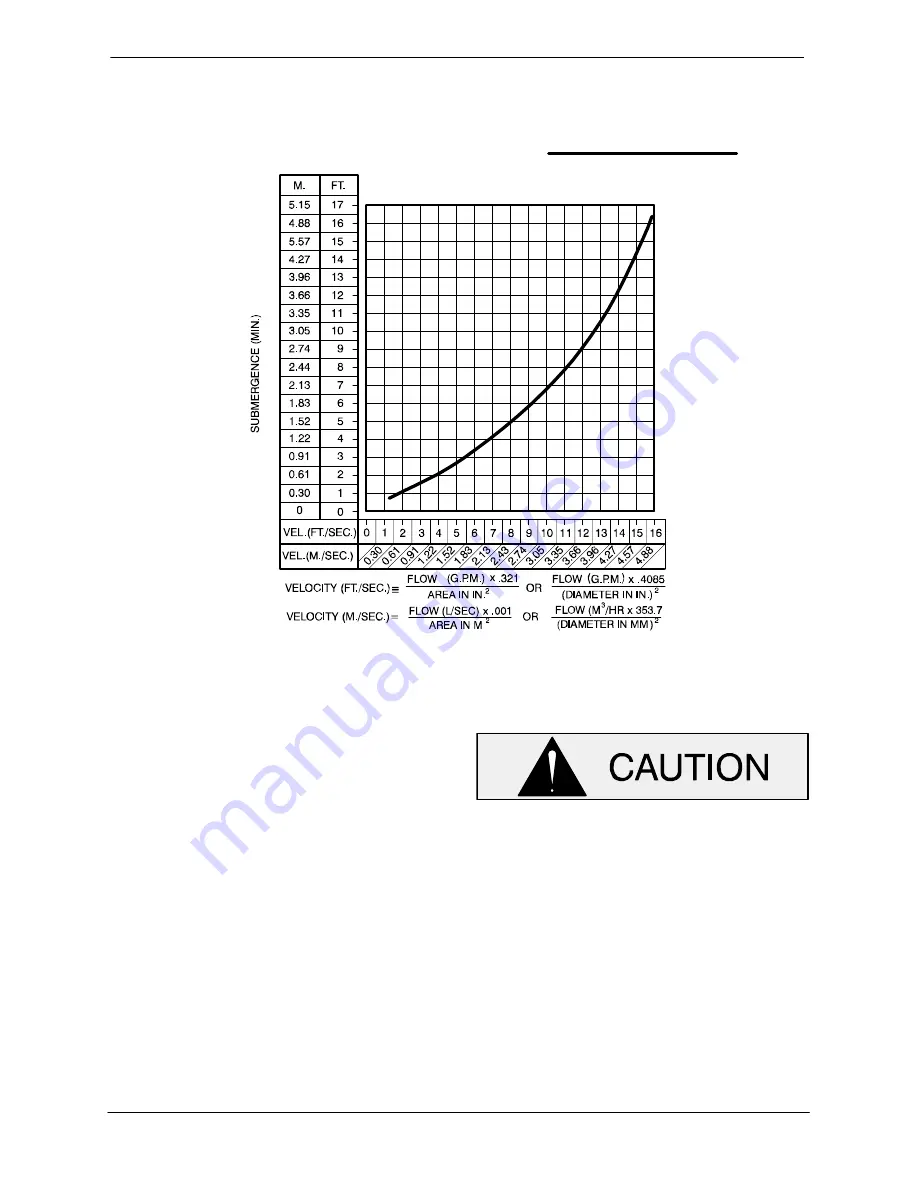
OM−00974
80 SERIES
PAGE B − 4
INSTALLATION
NOTE
The pipe submergence required may be reduced
by installing a standard pipe increaser fitting at the
end of the suction line. The larger opening size will
reduce the inlet velocity. Calculate the required
submergence using the following formula based
on the increased opening size (area or diameter).
Figure 2. Recommended Minimum Suction Line Submergence vs. Velocity
DISCHARGE LINES
Siphoning
Do not terminate the discharge line at a level lower
than that of the liquid being pumped unless a si-
phon breaker is used in the line. Otherwise, a si-
phoning action causing damage to the pump
could result.
Valves
If a throttling valve is desired in the discharge line,
use a valve as large as the largest pipe to minimize
friction losses. Never install a throttling valve in a
suction line.
With high discharge heads, it is recommended that
a throttling valve and a system check valve be in-
stalled in the discharge line to protect the pump
from excessive shock pressure and reverse rota-
tion when it is stopped.
If the application involves a high discharge
head, gradually close the discharge
throttling valve before stopping the pump.
Bypass Lines
If a system check valve is used due to high dis-
charge head, it may be necessary to vent trapped
air from the top of the pump during the priming
process. This may be accomplished by installing a
bypass line from the top of the pump, back to the
source of liquid. The end of the bypass line must be
submerged. The line must be large enough to pre-
vent clogging, but not so large as to affect pump
discharge capacity.












































